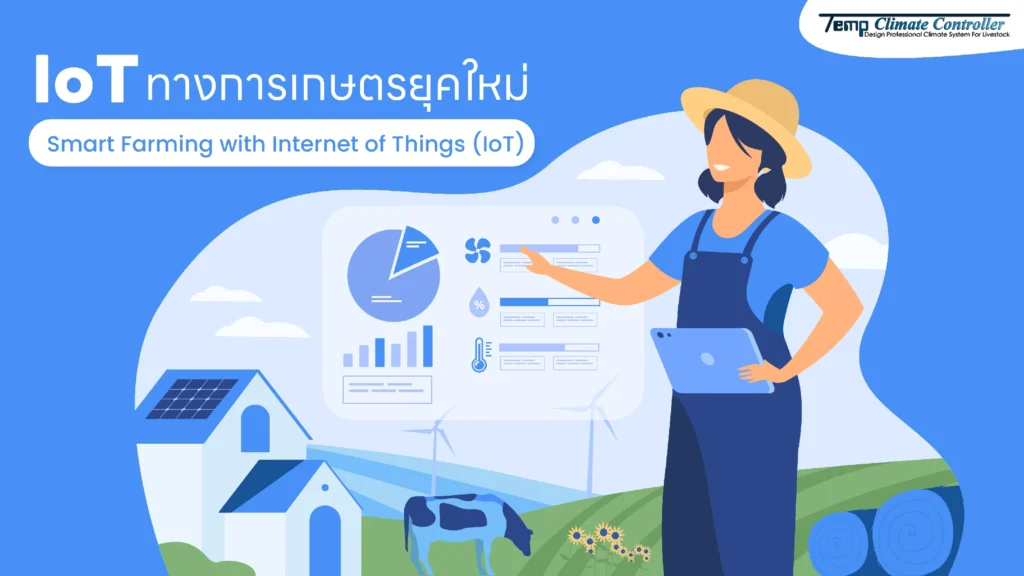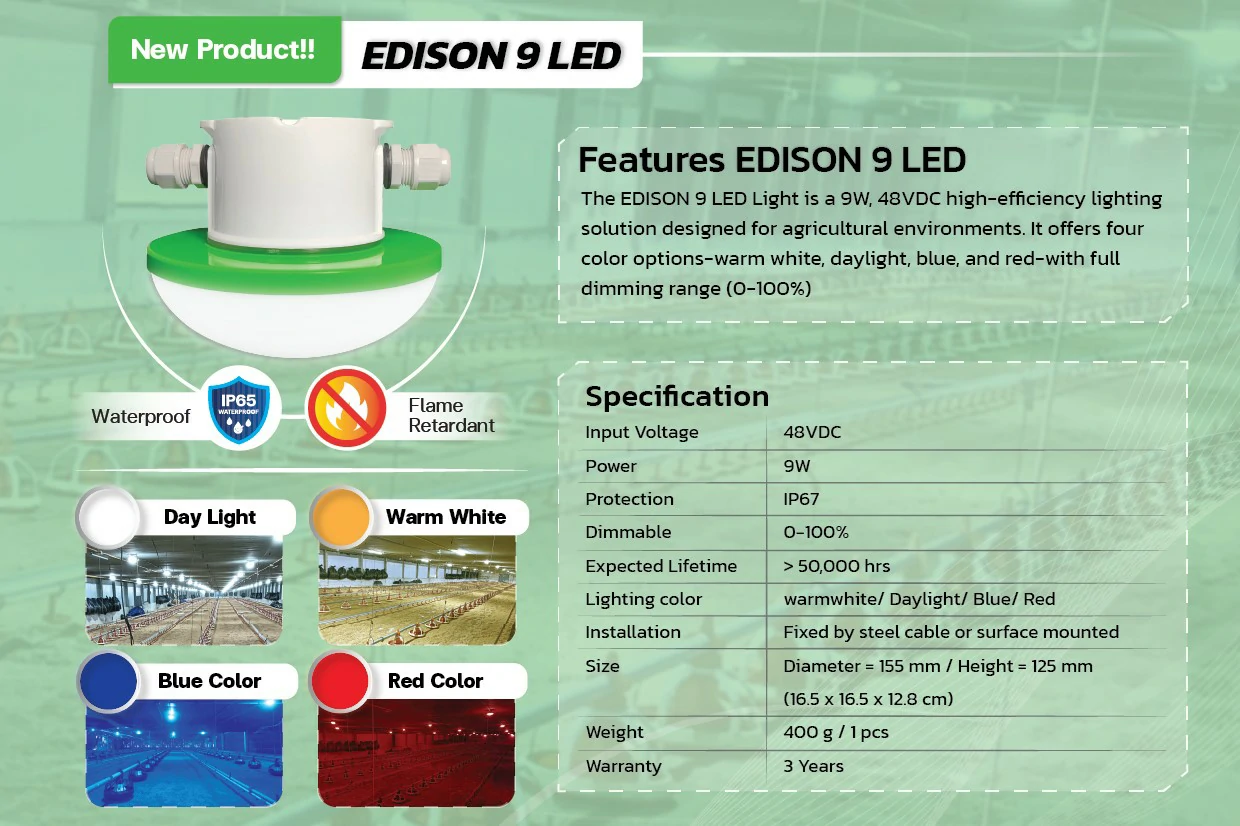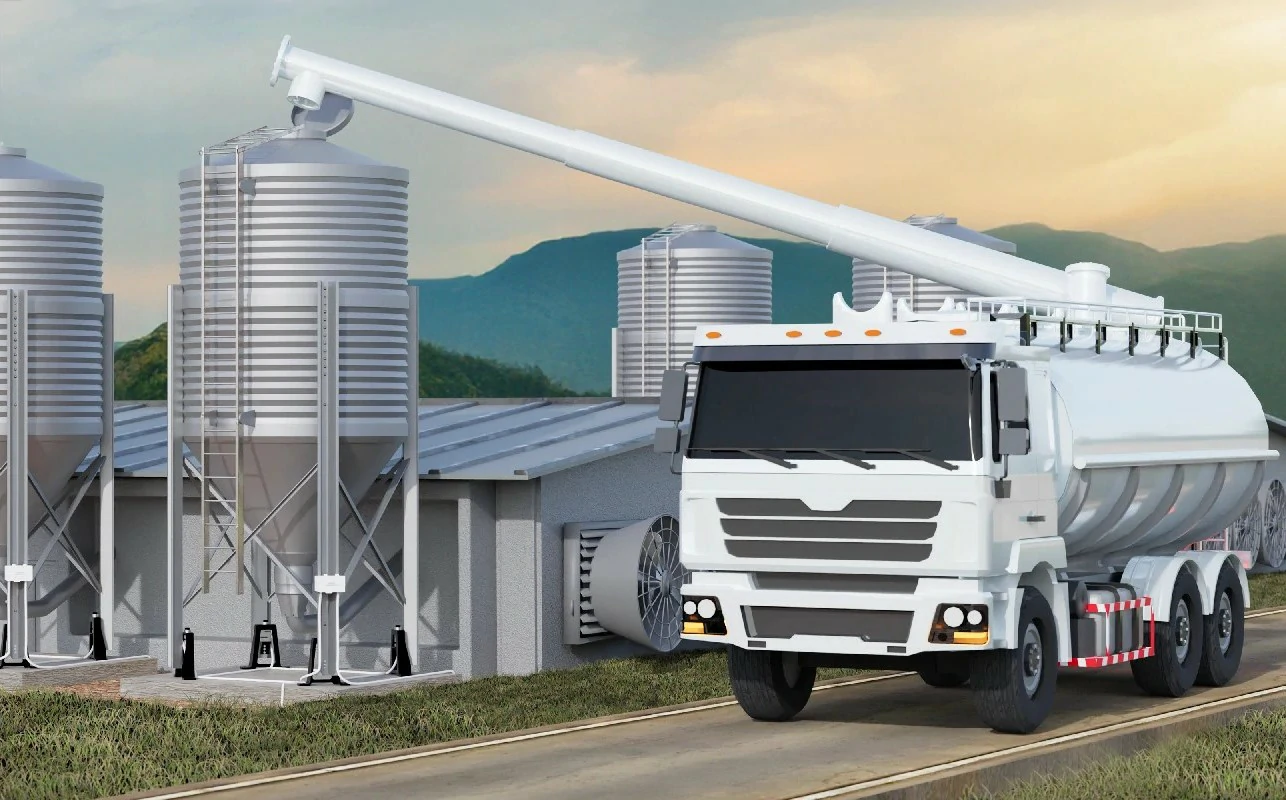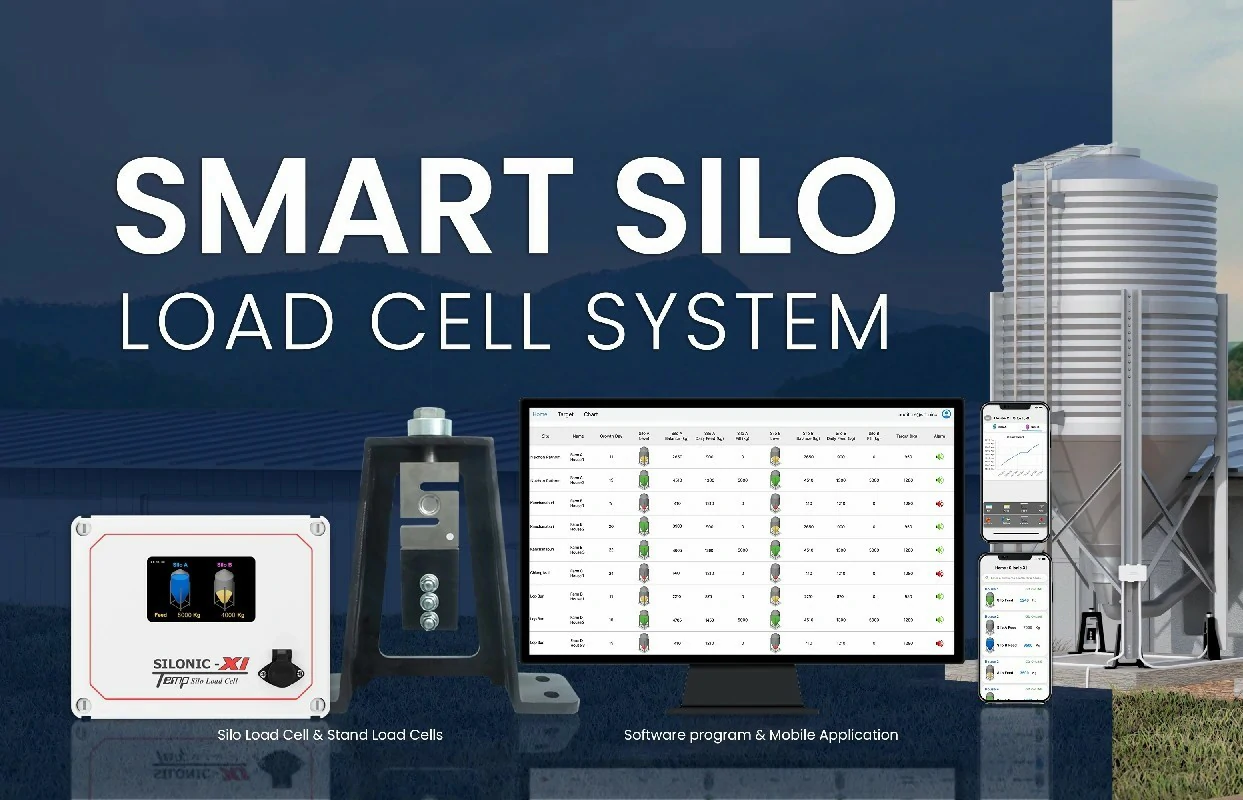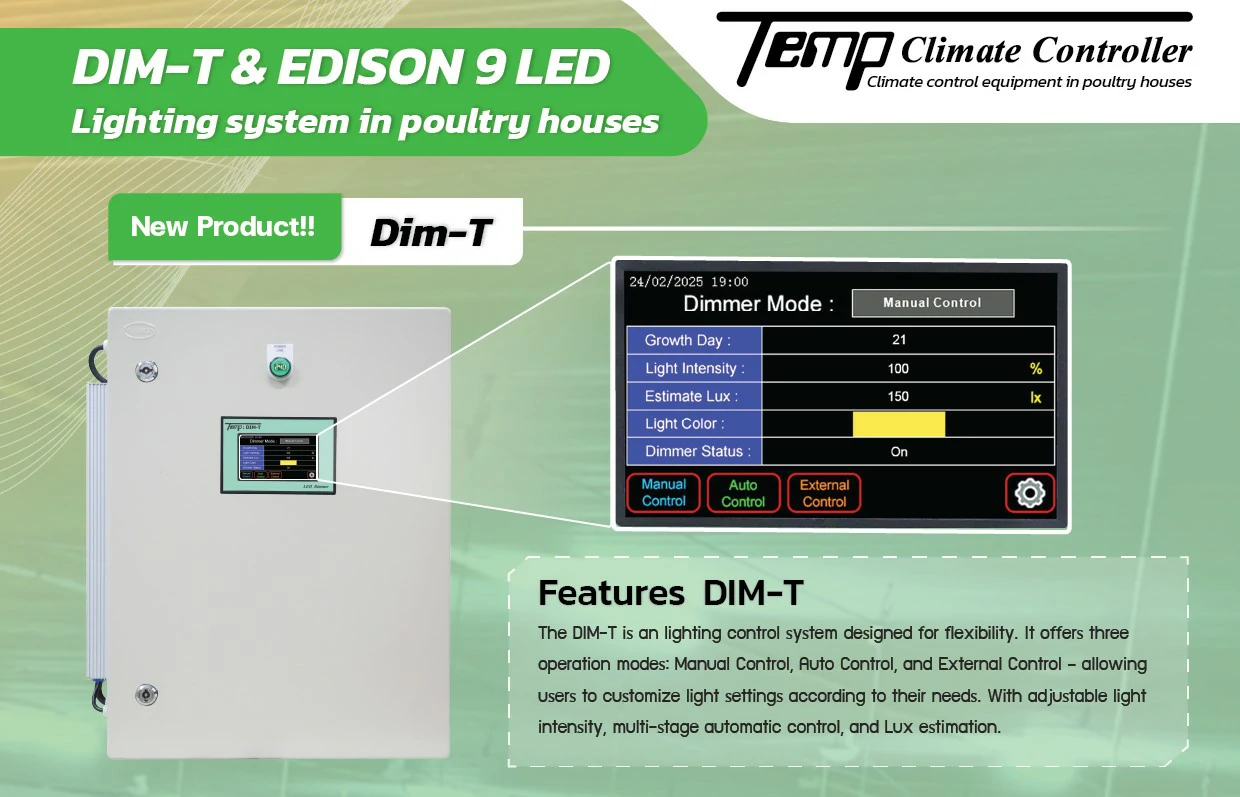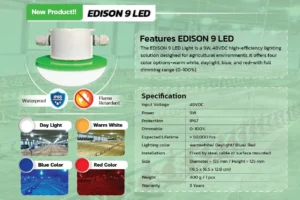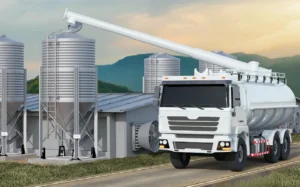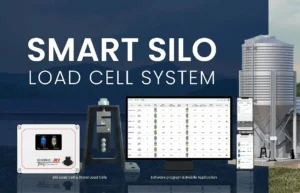Agricultural IoT Connecting Technology to Smart Farming
The Internet of Things (IoT) is one of the key technologies transforming modern agriculture. It shifts farming from traditional methods—relying heavily on manual labor and farmer experience—into Smart Farming, which is driven by data and connectivity.
Agricultural IoT refers to the deployment of internet-connected sensors and devices across farms to collect in-depth data on environmental conditions, crop and livestock growth, and resource management efficiency.
Key Components of Agricultural IoT
Sensors
Measure soil moisture, temperature, humidity, air quality, and livestock health.
Transmit real-time data to a central system for analysis.
IoT Platforms
Aggregate data from multiple sensors and devices.
Analyze trends and predict issues such as drought, disease outbreaks, or livestock growth performance.
Automation & Actuators
Automatically adjust irrigation, fertilization, or ventilation systems.
Reduce human error and increase farm management accuracy.
Real-Time Communication
Sensor data is sent instantly to farmers’ mobile devices or computers.
Enables timely decision-making and problem-solving.
Benefits of Agricultural IoT
Enhanced productivity: Adjust farm operations using real-time data to reduce losses.
Cost savings: Optimize resources such as water, fertilizer, and energy.
Better monitoring & analysis: Track farm operations remotely with continuous insights.
Sustainability: Reduce environmental impact and support long-term food security.
Example: IoT in Poultry Farming
In closed house poultry farms, maintaining optimal temperature, humidity, and ventilation is critical to animal health and growth.
The Temp Climate Controller is a practical example of Agricultural IoT in action:
Monitors temperature and humidity in real time.
Automatically adjusts fans and ventilation systems.
Sends data to digital platforms for analysis and future planning.
Minimizes risks while improving productivity and efficiency.
IoT: The Core of Smart & Digital Farming
Agricultural IoT is a core enabler of both Smart Farming and Digital Farming, empowering farmers to manage their farms with precision, reduce costs, increase yields, and promote sustainable practices.
The Temp Climate Controller is one of the key solutions bridging IoT with poultry farm management, helping farms in Thailand transition into the era of true Smart Farming.
🔖 #SmartFarming #TempClimateController #Farm #Temp #SustainableAgriculture
Agricultural IoT Connecting Technology to Smart Farming
The Internet of Things (IoT) is one of the key technologies transforming modern agriculture. It shifts farming from traditional methods—relying heavily on manual labor and farmer experience—into Smart Farming, which is driven by data and connectivity.
Agricultural IoT refers to the deployment of internet-connected sensors and devices across farms to collect in-depth data on environmental conditions, crop and livestock growth, and resource management efficiency.
Key Components of Agricultural IoT
Sensors
Measure soil moisture, temperature, humidity, air quality, and livestock health.
Transmit real-time data to a central system for analysis.
IoT Platforms
Aggregate data from multiple sensors and devices.
Analyze trends and predict issues such as drought, disease outbreaks, or livestock growth performance.
Automation & Actuators
Automatically adjust irrigation, fertilization, or ventilation systems.
Reduce human error and increase farm management accuracy.
Real-Time Communication
Sensor data is sent instantly to farmers’ mobile devices or computers.
Enables timely decision-making and problem-solving.
Benefits of Agricultural IoT
Enhanced productivity: Adjust farm operations using real-time data to reduce losses.
Cost savings: Optimize resources such as water, fertilizer, and energy.
Better monitoring & analysis: Track farm operations remotely with continuous insights.
Sustainability: Reduce environmental impact and support long-term food security.
Example: IoT in Poultry Farming
In closed house poultry farms, maintaining optimal temperature, humidity, and ventilation is critical to animal health and growth.
The Temp Climate Controller is a practical example of Agricultural IoT in action:
Monitors temperature and humidity in real time.
Automatically adjusts fans and ventilation systems.
Sends data to digital platforms for analysis and future planning.
Minimizes risks while improving productivity and efficiency.
IoT: The Core of Smart & Digital Farming
Agricultural IoT is a core enabler of both Smart Farming and Digital Farming, empowering farmers to manage their farms with precision, reduce costs, increase yields, and promote sustainable practices.
The Temp Climate Controller is one of the key solutions bridging IoT with poultry farm management, helping farms in Thailand transition into the era of true Smart Farming.
🔖 #SmartFarming #TempClimateController #Farm #Temp #SustainableAgriculture
Agricultural IoT Connecting Technology to Smart Farming
The Internet of Things (IoT) is one of the key technologies transforming modern agriculture. It shifts farming from traditional methods—relying heavily on manual labor and farmer experience—into Smart Farming, which is driven by data and connectivity.
Agricultural IoT refers to the deployment of internet-connected sensors and devices across farms to collect in-depth data on environmental conditions, crop and livestock growth, and resource management efficiency.
Key Components of Agricultural IoT
Sensors
Measure soil moisture, temperature, humidity, air quality, and livestock health.
Transmit real-time data to a central system for analysis.
IoT Platforms
Aggregate data from multiple sensors and devices.
Analyze trends and predict issues such as drought, disease outbreaks, or livestock growth performance.
Automation & Actuators
Automatically adjust irrigation, fertilization, or ventilation systems.
Reduce human error and increase farm management accuracy.
Real-Time Communication
Sensor data is sent instantly to farmers’ mobile devices or computers.
Enables timely decision-making and problem-solving.
Benefits of Agricultural IoT
Enhanced productivity: Adjust farm operations using real-time data to reduce losses. Cost savings: Optimize resources such as water, fertilizer, and energy. Better monitoring & analysis: Track farm operations remotely with continuous insights.
Sustainability: Reduce environmental impact and support long-term food security.
Example: IoT in Poultry Farming
In closed house poultry farms, maintaining optimal temperature, humidity, and ventilation is critical to animal health and growth.
The Temp Climate Controller is a practical example of Agricultural IoT in action:
Monitors temperature and humidity in real time.
Automatically adjusts fans and ventilation systems.
Sends data to digital platforms for analysis and future planning.
Minimizes risks while improving productivity and efficiency.
IoT: The Core of Smart & Digital Farming
Agricultural IoT is a core enabler of both Smart Farming and Digital Farming, empowering farmers to manage their farms with precision, reduce costs, increase yields, and promote sustainable practices.
The Temp Climate Controller is one of the key solutions bridging IoT with poultry farm management, helping farms in Thailand transition into the era of true Smart Farming.
🔖 #SmartFarming #TempClimateController #Farm #Temp #SustainableAgriculture








